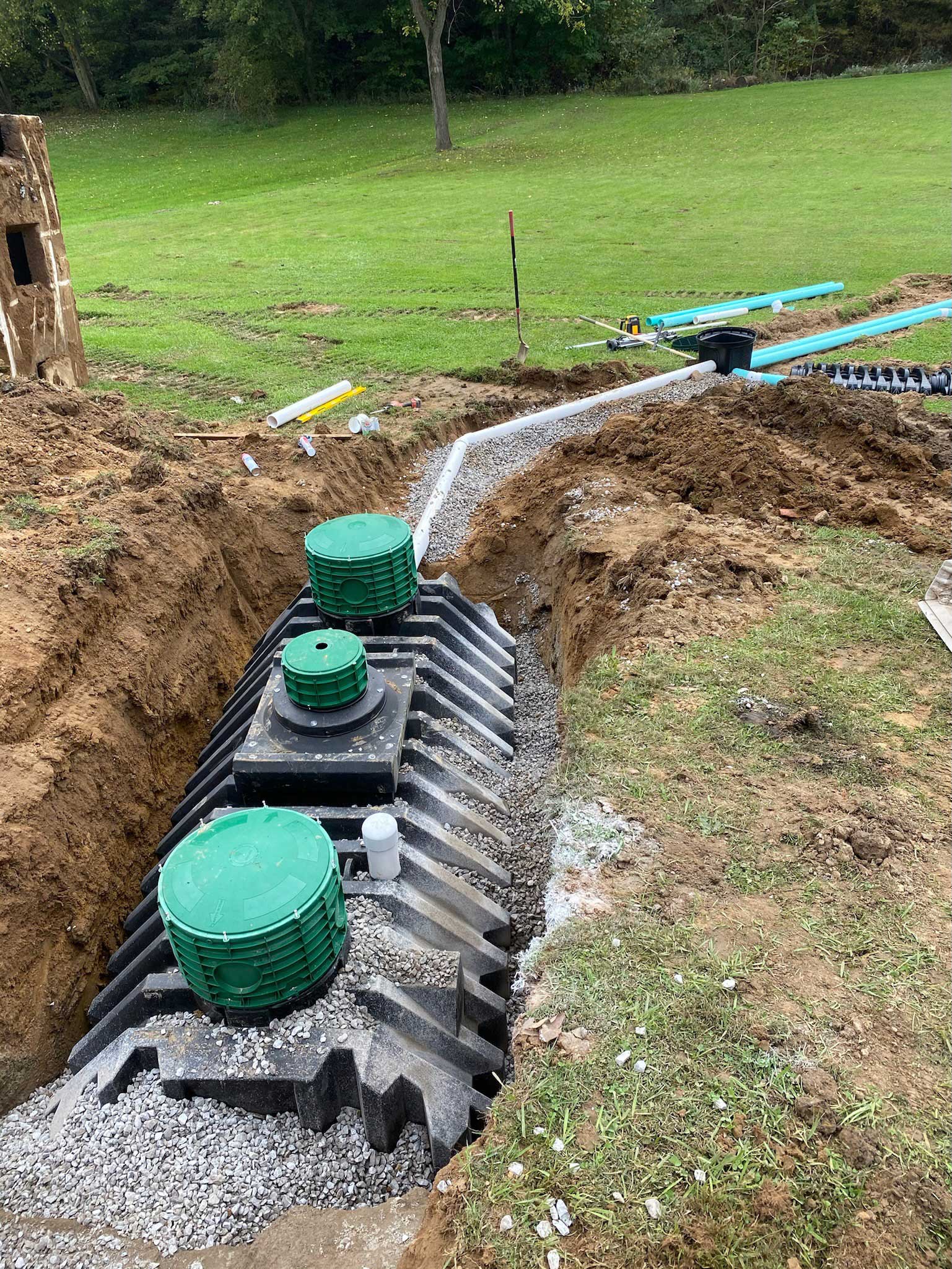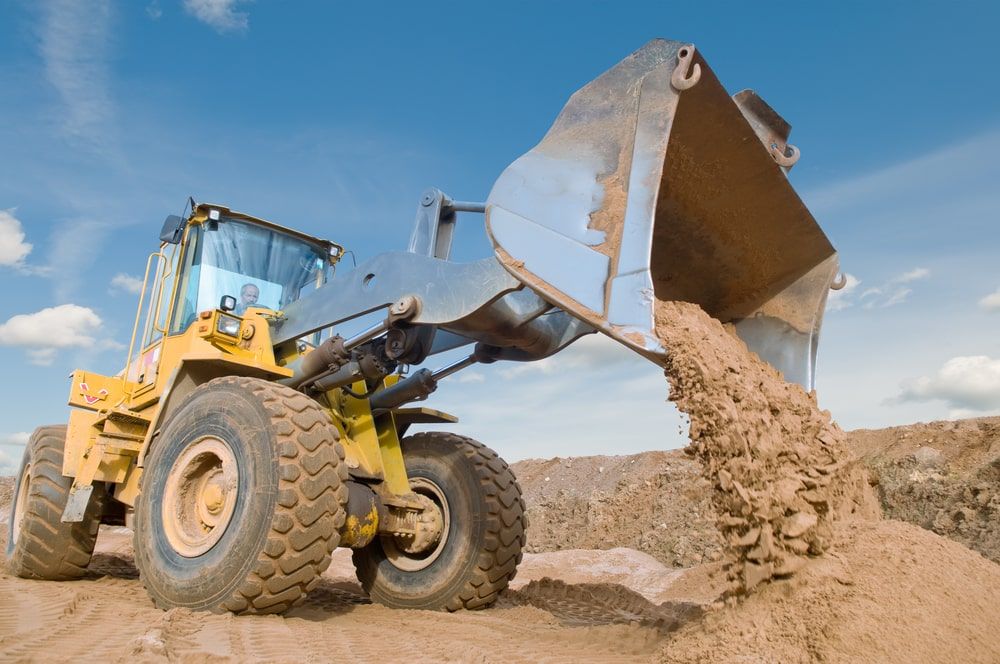Specialist Septic Ohio - Trusted Septic System Specialists in Ohio
Specialist Septic Ohio - Trusted Septic System Specialists in Ohio
Blog Article
Unveiling the Art of Excavation: Pro Tips for Safe and Productive Excavating
As soil is transformed and planet is moved, the complexities of excavation reveal themselves, demanding a keen understanding of tools, dirt structure, security procedures, and ecological considerations. The knowledge needed to browse these elements successfully can mean the distinction between an effective excavation job and a prospective disaster.
Relevance of Appropriate Equipment
To guarantee the security and performance of any type of excavation job, making use of the ideal devices is extremely important. The right tools not just boost productivity but additionally reduce dangers linked with digging. Excavation projects differ in range and complexity, ranging from small domestic landscape design jobs to large building undertakings. Despite the project dimension, having the proper devices can make a considerable distinction in the outcome.
These functional makers come in different sizes to suit various task demands. Small excavators are excellent for smaller jobs, while larger excavators tackle more considerable projects successfully.
Besides excavators, various other critical equipment includes dump vehicles, plates, and bulldozers. Dump trucks are important for eliminating and delivering excavated materials, while trenchers are used for excavating deep and narrow trenches. Excavators stand out in tasks that require pressing huge amounts of dirt or particles. By spending in the appropriate devices, excavation projects can be completed securely, on time, and with precision.
Recognizing Dirt Structure
An extensive grasp of soil composition is fundamental for performing excavation jobs with accuracy and safety and security. Comprehending the different kinds of dirt is critical as it straight influences excavation approaches, devices choice, and total job efficiency. Soil make-up normally includes four major elements: sand, silt, clay, and natural issue. Each component has one-of-a-kind homes that affect exactly how soil reacts to excavation processes.
Silt bits are smaller sized than sand yet bigger than clay, supplying modest drain and communication. Organic issue, such as decaying plant material, influences dirt fertility and stability.
Prior to starting excavation, carrying out soil tests to determine its composition and attributes is necessary. This details aids in choosing the proper equipment, carrying out safety steps, and establishing excavation methods customized to the particular dirt problems - lancaster trenching. By recognizing soil composition, excavation professionals can improve job outcomes while making sure safety and security and adherence to finest methods
Safety And Security Actions and Procedures
Understanding dirt structure is the cornerstone whereupon precaution and methods for excavation jobs are built, making certain the wellness of workers and the success of the undertaking. There are several essential steps that have to be implemented to mitigate risks and protect against mishaps. when it comes to safety and security throughout excavation.
First and foremost, prior to any excavating commences, an extensive evaluation of the site should be conducted to recognize any potential risks such as underground utilities, unsteady dirt problems, or close-by structures that can position a risk. It is critical to have a qualified person manage the excavation process to make certain that all safety and security protocols are followed strictly.
Moreover, all workers involved in the excavation has to be correctly educated in safe digging practices go to my blog and the appropriate operation of tools. Personal protective tools (PPE) such as construction hats, high visibility garments, gloves, and safety boots ought to be put on whatsoever times to decrease the danger of injuries. septic ohio. Normal safety and security meetings and toolbox talks should additionally be carried out to keep all employees informed concerning potential dangers and strengthen risk-free work practices. By adhering to these security procedures and protocols, excavation jobs can be finished efficiently and without case.
Reliable Excavation Preparation
When embarking on an excavation job, meticulous preparation is essential to make sure effectiveness, safety and security, and successful results. Efficient excavation planning involves numerous key steps that are crucial for the smooth implementation of the task.
When the website analysis is full, the following action is to produce a clear timeline and schedule for the excavation tasks. This includes establishing the sequence of tasks, tools requirements, and workforce appropriation. Appropriate scheduling aids prevent delays and ensures that the task stays on track.

In addition, communication among all staff member is critical during the planning stage. Clear instructions, routine updates, and reliable control are essential for an effective excavation job. By spending effort and time in meticulous preparation, excavation teams can significantly enhance performance, decrease risks, and attain effective results.

Managing Ecological Considerations
With raising focus on environmental sustainability in building and construction techniques, managing environmental factors to consider has actually ended up being a vital element of excavation jobs. Excavation activities have the prospective to affect the surrounding atmosphere with dirt erosion, sediment drainage, environment disturbance, and contamination of water sources. To mitigate these threats, it is important to execute ideal practices that focus on environmental security.

Additionally, appropriate waste administration is essential to avoid soil and water contamination. Executing procedures for the disposal of unsafe materials, recycling of waste products, and reducing using damaging chemicals can significantly minimize the ecological effect of excavation his comment is here jobs. By integrating these techniques into excavation planning and implementation, building companies can ensure that their jobs are not just safe and effective yet additionally eco responsible.
Conclusion
To conclude, understanding the art of excavation calls for a comprehensive understanding of proper equipment, soil make-up, safety and anchor security actions, and efficient planning. By complying with these guidelines and considering environmental factors, excavations can be performed safely and efficiently. It is important to prioritize security and productivity in every digging task to guarantee successful outcomes.
As dirt is turned and earth is relocated, the ins and outs of excavation reveal themselves, demanding an eager understanding of tools, soil structure, safety protocols, and ecological considerations.To guarantee the safety and efficiency of any kind of excavation project, making use of the suitable equipment is critical.A detailed grasp of dirt composition is basic for carrying out excavation tasks with precision and safety and security. Understanding the different kinds of soil is vital as it straight influences excavation techniques, equipment option, and total project effectiveness. By understanding soil make-up, excavation specialists can improve project end results while making certain safety and security and adherence to ideal techniques.
Report this page